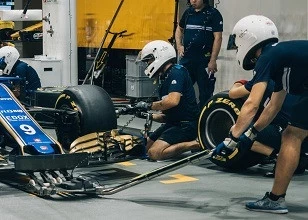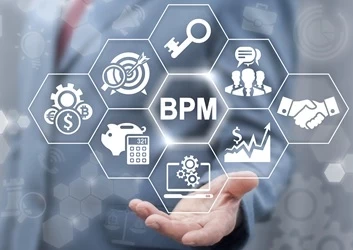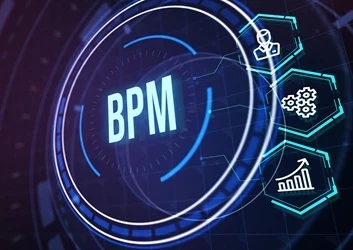Process Excellence at Cable & Wireless
Add bookmarkSlower growth in the telecommunications industry means that there is increasing pressure on profit margins, says Mark Zirbser, Head of Process Excellence at global telecommunications company Cable & Wireless, so improving process efficiency to drive growth has become a critical role of process improvement in the industry.
Editor's note: this is a transcript of the video interview How Process Excellence Underpins Growth at Cable & Wireless, filmed on location at PEX Week Europe.
D.Davis, PEX Network: So, process improvement or process excellence means a lot of different things to a lot of different companies – what does it look like at Cable & Wireless?
Mark Zirbser: At Cable & Wireless we’re treating process excellence as a journey to a new destination. So the company has just exited a very long turnaround period where we’re losing in excess of £300 million a year in cash and we’ve turned the corner from the turnaround. So now we’re in a new evolution of growth for the company and process excellence is helping us underpin our vision of business critical communications, so it’s a destination we’re aspiring to.
And what that process excellence, I think, there’s probably two elements for us. So, sustainable, predictable processes so that we are delivering consistently to our customers as well as ongoing improvements, so that way, we’re not only consistent but getting better and better ultimately, kind of walking that journey to process excellence.
D.Davis, PEX Network: With the ultimate goal of enabling that growth, then?
M. Zirbser: Yes, definitely about enabling the growth in both top line and bottom line. So for us, process excellence is as much about innovation as it is about improving operational performance and so forth.
D.Davis, PEX Network: Where does BPM fit within that definition?
M. Zirbser: So the way we’ve defined process excellence in BPLN, BPM and process excellence is synonymous. So if I look at the elements of process excellency in Cable & Wireless, it is about having some sort of process, architectural model that is the asset that we’re improving off of. So it is the asset; it’s creating value for the corporation. It’s about process owners and people who are leading their processes, measuring their processes in a consistent way, making sure that we’re driving down, even aligning their performance bonuses and annual objectives to process-based metrics. It’s about having a standardised process measurement framework so that we are truly measuring process from across functional perspective, rather than just in our traditional silos.
And then, ultimately, it’s around the improvement element. So when you look at BPM and process excellence, it really is… when we look at it, three things. One, design new processes effectively; the second one is manage those processes on a day-to-day basis such that they are stable and predictable and are controlled and then the third one is about process improvements. And when you wrap that around people – process technology, that’s where BPM and process excellence for us are the same.
D.Davis, PEX Network: Now you’ve mentioned a lot of different elements – clearly BPM has many different aspects too; it’s got technology, it’s got the processes, it’s got the people, it’s got the changed management. How do you bring that together into one coherent whole?
Mark Zirbser: Perseverance! I think for us at Cable & Wireless, we’ve looked at a few things. One, just introducing general awareness that process excellence underpins the next phase of growth for the company. And when you look at telecommunications industry at large, let along cable, wireless or any other incumbent in the business, it is not a fast-growing industry. It is… we have increasing pressure on margins of our traditional business, so the requirement to become more process-efficient, more process-effective, to continue growth is one of the rallying causes we use.
And then, on more of a tangible perspective, in Cable & Wireless, we tend to focus on bringing centralised agencies together and working together on behalf of the business. So we look at, conventionally IT and doing business process from a technical perspective and Lean Six Signa from a process operation perspective. We’re bringing in those change agents including our transformational programme teams together under one unit called Business Enablement and Technology now, so we’re aspiring to improve the competitiveness and the innovation of that develop offering through to bill and collect, so the income statement side of the business.
So we’ve actually centralised a group in an organisational structure and then started to blend methodology so that if I’m looking at an operational improvement project, it is a DMAIC cycle. But when we get to the analyse and improve phase we’re actually relying, going straight into our building capability and IT development cycle so that we have a new way of bringing requirements that are linked to operational improvements. So we’re finding new ways to blend existing methodologies to ultimately look at one thing. And I think this is part of the crux for us is, it’s one process, it’s one process owner, it’s one requirement for performance and therefore it should be one approach and one team that is helping the business improve its performance.
D.Davis, PEX Network: So it’s really about bringing those disparate parts together - those disparate disciplines - under one project umbrella?
Mark Zirbser: Yes, our approach has been break down the silos and all of the change agencies and process agencies in the business so that we have a unified front to helping to pin the core operational side of the business. So they’re getting much better services from our centralised agency as well, so it’s a win-win for both of us.
D.Davis, PEX Network: Now how do you… traditionally, the IT guys haven’t spoken the language of the process guys; process guys haven’t spoken the language of business – how do you get everyone speaking the same language?
Mark Zirbser: So, one, we start with pictures. So, here we have invested in BPMS, we have a BPMS suite with some resorted architecture and all the technology. But if you think about process capture through to optimisation through to development into a process engine, it starts with diamonds as decision boxes and squares as process steps. So we’ve actually started with symbology in one respect, so that way, a decision box and the brown paper exercise for the process-owner is the same decision box that goes into a swimlane in Visio which is the same decision box that goes into a developed solution or BPM suite.
So that’s one way to look at it. And I think the other one is to make sure that we’re always thinking from the voice of the customer, and when I say voice of the customer, I mean, internally. So we know that our core operational processes are under immense pressure to get better and we know from a growth perspective we need to bring change into the organisation. So if we’re thinking about improve their performance and understanding their problems rather than building new technology, new capability and trying to sell it into the business.
So it has to be solving one of their problems that they see as a priority. And the second one is, when we are bringing change from the top down that we recognise [that] our job is to actually minimise the impact into the business so that when we are bringing change to them rather than for them, that we understand that there are internal customers. So, treating them as internal customers and something as simple as symbology are two of the ways we’re trying to bridge that gap.
[eventPDF]
























